 |
| March 17, 2015 | Volume 11 Issue 11 |
Designfax weekly eMagazine
Archives
Partners
Manufacturing Center
Product Spotlight
Modern Applications News
Metalworking Ideas For
Today's Job Shops
Tooling and Production
Strategies for large
metalworking plants
Drone Tech:
Servomotors stabilize and position UAV cameras
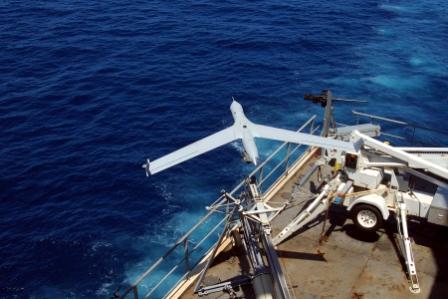
There was a time when reconnaissance meant either multi-million dollar satellites snapping a few shots per orbit or pilots risking their lives to fly over hostile territory. Today, recon is dominated by unmanned aerial vehicles (UAVs) and drones, a much more cost-effective approach that presents no risk to the operators, who are not only on the ground but frequently on the other side of the globe.
However, imagery is only useful if it is crisp and clear, which requires both focusing and stabilization. That's where Alticam Vision Corporation excels. In 2001, Alticam (now branded as Hood Tech Vision) developed the first 700-g gyro-feedback-stabilized sensor turret. This enabled a new class of lightweight UAVs weighing 15 kg and offering 24 hr of endurance. Central to the success of these systems is a collection of compact motors from MICROMO.
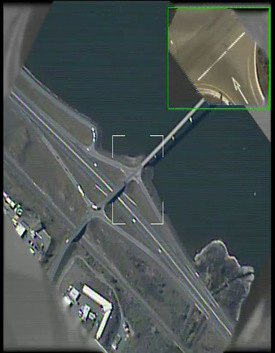
"We're trying to squeeze as much as we can into this class of UAV, but also keep them small, light, and affordable," says Alticam Tech President Dr. Andy Von Flotow, also noting that larger, more sophisticated UAVs can run around $10 million, compared to $100,000 to $200,000 for small, light designs. "People have to make reservations days and weeks in advance for the big UAVs, while they can afford to distribute the smaller, more economical design widely so everyone can use them."
Alticam Vision currently uses several classes of imagers: an electro-optical daylight camera and a selection of infrared (IR) cameras that image primarily in mid-wave and long-wave IR spectral bands. The cameras produce NTSC video with fields of view on the order of 10 to 30 ft for a 1,000-ft to 3,000-ft altitude. Object-tracking feedback based on optical control loops allows the cameras to lock onto objects. For example, they can automatically track a truck driving along a road.
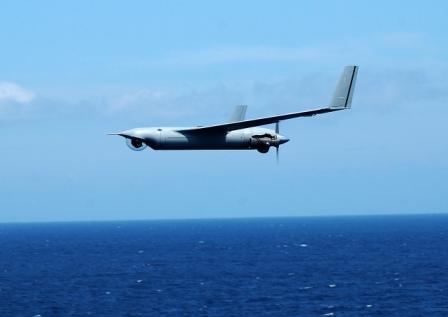
Dust in the wind
An Alticam Vision turret keeps the sensor payload and electronics steady and aimed while countering vibration, thermal loading, wind forces, and more. The 500-g gyro-controlled gimbal mechanism consists of a coarse/fine design, with the outer coarse stage powered by MICROMO motors.
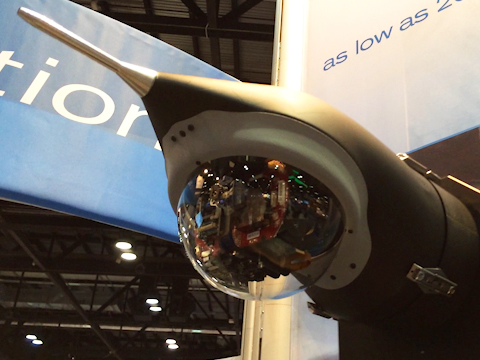
The turret controls both coarse axes using micro-stepping stepper motors as rate actuators, closing the loop with an absolute encoder. Why not just use a torquer, you ask? Simple, says Dr. Von Flotow. With a stepper motor, when you command a step you get one, when you command a step rate, you get that velocity. When you command a torquer, you don't get any motion until the torque you command overcomes the friction and then it jumps, so you have to do clever friction compensation.
"Most people think of steppers as doing a discrete number of steps, but we step these things at tens of thousands of times per second. At such rates, friction and striation are almost irrelevant and the motion becomes nearly smooth. It's basically then an angular velocity actuator," Dr. Von Flotow says. The motors are teamed with dual-path spur gearboxes to produce a 200:1 reduction ratio. That yields an angular velocity of up to 90 deg/s for the axis of rotation.
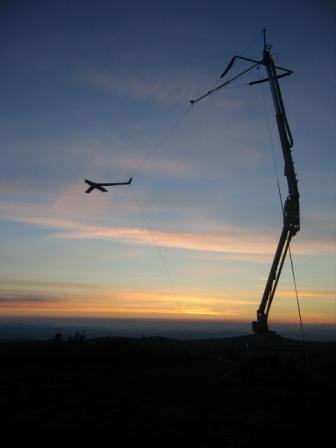
In a precision pointing application like aerial reconnaissance, backlash can introduce unacceptable errors. To eliminate the issue, Alticam Vision turned to MICROMO zero-backlash gearboxes. The components essentially incorporate two parallel gear trains that are wound elastically against each other. When you use such a gearbox, it's always a compromise between winding it too tight, generating so much friction that usable actuation torque is reduced to being useless, or winding it not quite tight enough, to where you still have a little bit of backlash, says Dr. Von Flotow. "We had to work with MICROMO to get that right. We had to develop the process together," he says.
The coarse stage features a large articulation, endless pan with slip rings to eliminate cable windup, and hence the need for unwind maneuvers. While the visible-wavelength imagers come equipped with motorized focus and zoom, the IR turrets also incorporate brushed DC motors from MICROMO for their focus mechanism. Some of the IR imagers also incorporate motorized zoom.
Source: MICROMO
Published March 2015
Rate this article
View our terms of use and privacy policy
